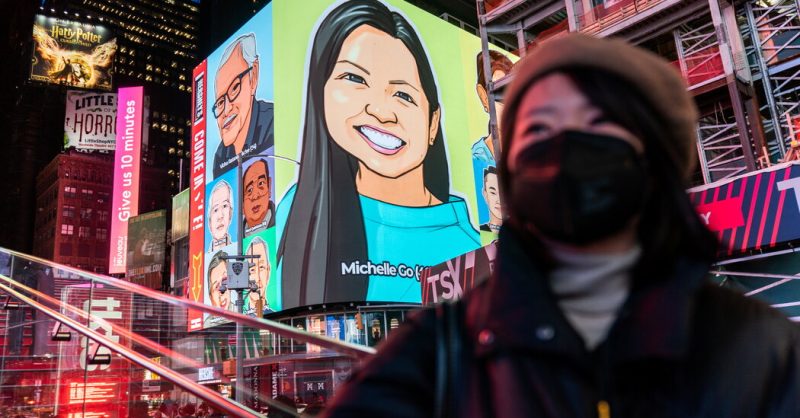Subway Killing Spurs Bill to Expand Medicaid Funds for Psychiatric Beds

As the nation faces a growing mental health crisis among people who are homeless, a bipartisan bill being introduced in Congress on Thursday may substantially increase the number of psychiatric beds covered by Medicaid.
Proponents of the bill say that it will help address a severe shortage of psychiatric hospital beds and spur the construction of new beds and new facilities.
The bill is sponsored by the unlikely-seeming New York City congressional duo of Dan Goldman, a liberal Democrat, and Nicole Malliotakis, a Republican Trump loyalist, along with Representatives Tony Cárdenas, Democrat of California, and Gus Bilirakis, a Florida Republican.
Mr. Goldman is the lead author of the bill, the Michelle Go Act, named after the woman who was fatally pushed in front of a subway train in New York in 2022 by a man with schizophrenia, who had spent decades rotating from hospital to jail to street.
Under current law, for people age 21 to 64, Medicaid covers stays in dedicated psychiatric hospitals only if they have 16 or fewer beds. The Michelle Go Act would raise the threshold to 36 beds.
Mr. Goldman said in an interview that the legislation would “not only provide for significantly more beds for long-term mental health care but has the potential to increase the ability for those who cannot afford mental health care to get the treatment they need.”
Mr. Goldman has said that he would have liked to remove the cap on hospital size altogether — one estimate put the cost at $33 billion over 10 years. But he said that the more modest measure was necessary to win support on both sides of the aisle.
“It’s limited because we still have to pay for it, but it’s still a tremendous step in the right direction,” Ms. Malliotakis said in an interview. She said that the costs of raising the cap would be partly offset by money saved elsewhere: Homeless people with untreated mental illness very often wind up in emergency rooms or in jail.
“They go in, they go out, they’re not getting treatment for their underlying condition,” she said. “It does not help the individual, does not keep the public safe, and it does not help the taxpayers’ interests.”
Lisa Dailey, executive director of the Treatment Advocacy Center, which pushes for better access to mental health care as well as stronger involuntary commitment policies, supports the bill. She noted that most long-term beds in psychiatric hospitals are now occupied by people who came in through the criminal justice system.
Ms. Go’s father, Justin Go, said in a statement that the bill “represents a vital step towards fixing the very system that failed Michelle so catastrophically, a step towards sparing other families the unimaginable grief we now carry, and a step towards justice.”
It is not clear how many beds would immediately become covered by Medicaid, but the number is likely to be in the low thousands.
The lifting of the threshold is intended to encourage small hospitals with only 16 beds to double their capacities, and hospital developers to build new facilities.
“When you think about the economics of a 16-bed facility, it really doesn’t cost a lot more to run a 30-bed facility, but the revenue at the 16-bed facility is half,” said Ms. Dailey of the Treatment Advocacy Center, who supports the bill. The National Alliance on Mental Illness, an advocate for patients, also endorsed the bill.
In institutions covered by Medicaid, it typically pays between 50 and 80 percent of the cost. The state pays the rest.
Carolyn D. Gorman, a policy analyst at the Manhattan Institute, an urban affairs think tank, has argued for eliminating the Medicaid bed limit and was skeptical that the Michelle Go Act would significantly increase the supply of beds. “Maybe this is what’s politically feasible right now,” she said, “but whatever the number of beds that will be added, capacity is far too low.”
The current bed crisis is in large part a consequence of the deinstitutionalization movement that started in the 1960s with the recognition that many state psychiatric hospitals had become grim warehouses where people were locked away and forgotten.
Medicaid is part of that movement: When the federal program was created in 1965, the 16-bed coverage limit was intended to discourage states from keeping people in big asylums, Ms. Gorman said.
Many experts feel that the pendulum has swung too far, away from long-term hospitalization, especially because community support systems that were supposed to replace the asylums were never effectively put in place.
In 1955, there were over half a million state hospital beds, according to Dominic Sisti, a medical ethicist at the University of Pennsylvania. By 2018, there were about 37,000 public beds and about the same number of private beds.








